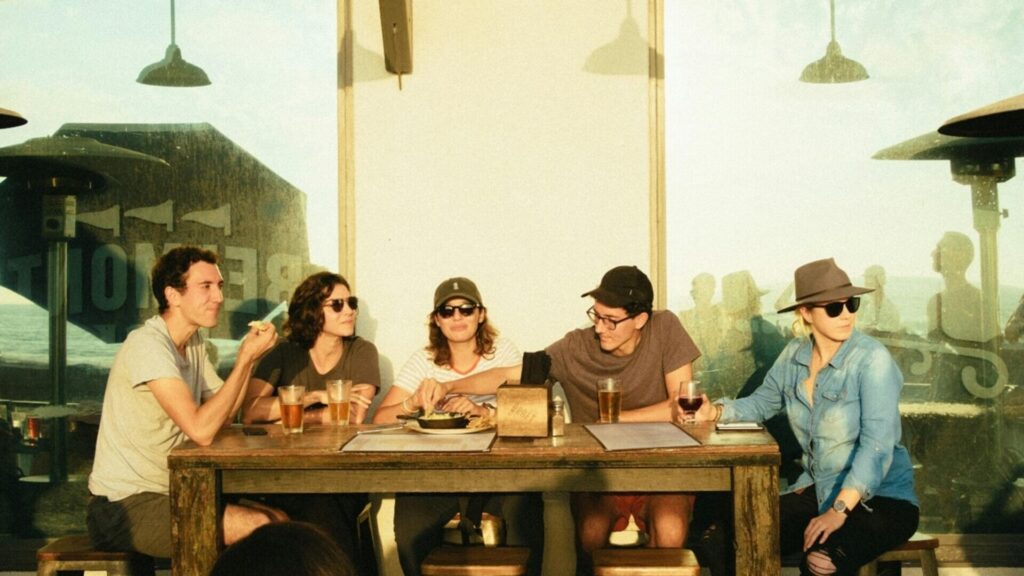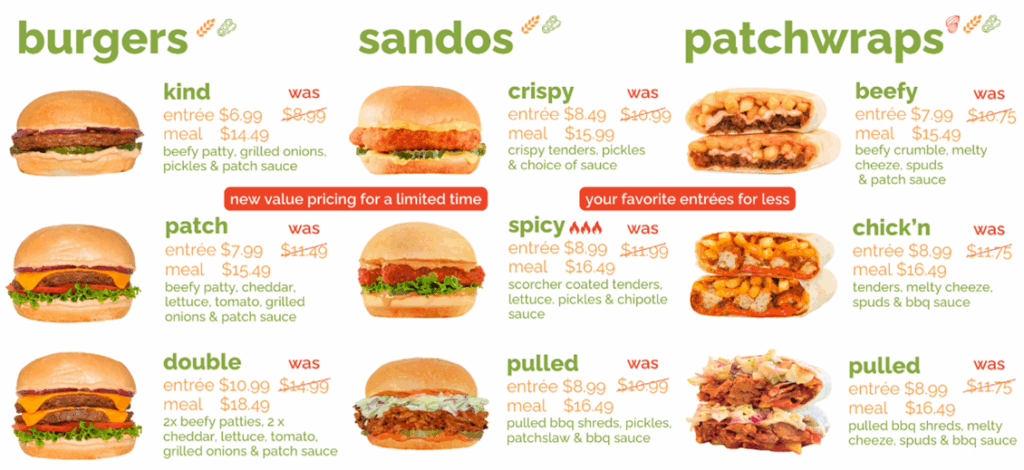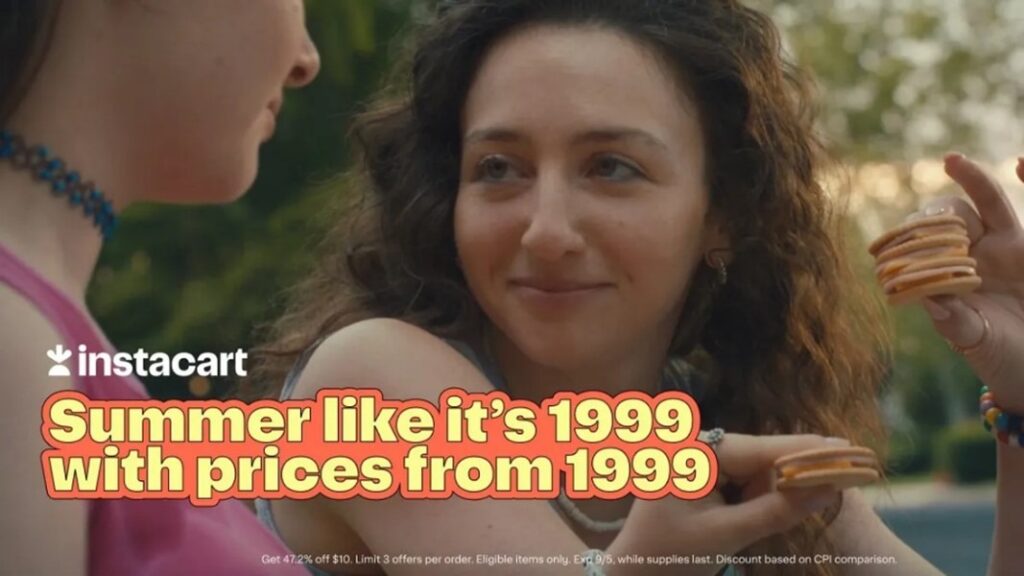Key insights
- Throwback pricing is having a moment. Burger Patch’s “Eat Like It’s 2019” campaign, which offered price cuts with a side of nostalgia, led to a reported 16% increase in traffic and 10% increase in revenue.
- Unhealthy beauty ideals are back. The hashtag #SkinnyTok has had more than 2.4 billion views on TikTok and was recently banned from the platform.
- The blank look young people sometimes give has a name. The so-called “Gen Z stare” is reshaping norms around workplace and service interactions, as well as sparking debate across generations.
Overview
Why are restaurants and retailers resorting to throwback pricing? Why is #Skinnytok having a moment? And what’s the significance of the “Gen Z stare”?
Below we explore three topics on our radar this month and their impact on consumers. By scanning the headlines, keeping tabs on social media conversations and tuning into the zeitgeist, we connect the dots between our trends and the wider world so that you can make sense of what’s happening now and what it means for you.
1. Why restaurants are reviving retro pricing

Restaurants and retailers are helping customers tackle rising costs with discounts and deals
For many consumers grappling with elevated living costs, the prospect of eating out can be financially daunting. With hospitality operators facing rising ingredient, energy and labor costs, menu prices remain stubbornly high in many countries. And rising food prices, made all the more likely by climate change, are adding upward pressure to menu staples.
In response, restaurants are experimenting with new tactics to stay attractive to diners – from innovating more affordable menu items to rolling out time-limited promotions and discounts. IKEA, for example, announced in June it was slashing restaurant prices across 14 countries this summer to “side with customers amid cost-of-living pressures”. In France, a family of four could now pay €6.96 (c. $8.03) for a typical meal instead of €19.90 ($22.96) – plus receive a €5 (c. $5.77) voucher to use in-store.
Nostalgia-infused pricing connects emotionally with value-seeking consumers
Some restaurant brands are going a step further in their discounting approaches by tapping into the emotional currency of nostalgia. Using “throwback pricing” – reverting to pricing from past decades or brand milestone years – restaurants are offering diners a helping of feel-good nostalgia with a side of affordability.
 There’s no shortage of creative executions. In the US, plant-based burger brand Burger Patch launched its “Eat Like It’s 2019” campaign, with time-limited reductions on most entrees as a nod to its founding year – and because “dining out hasn’t felt as joyful as it once did” because of rising prices. In June, the brand shared a refreshingly transparent update, reporting a 16% increase in traffic, a 10% increase in revenue, a 7% increase in loyalty program redemptions and a 5% decrease in average check size – a result framed as a “win” for both customer and company. Burger Patch says: “If this trend continues, these prices stick around.”
There’s no shortage of creative executions. In the US, plant-based burger brand Burger Patch launched its “Eat Like It’s 2019” campaign, with time-limited reductions on most entrees as a nod to its founding year – and because “dining out hasn’t felt as joyful as it once did” because of rising prices. In June, the brand shared a refreshingly transparent update, reporting a 16% increase in traffic, a 10% increase in revenue, a 7% increase in loyalty program redemptions and a 5% decrease in average check size – a result framed as a “win” for both customer and company. Burger Patch says: “If this trend continues, these prices stick around.”
Fast food chain White Castle went even further back in time: in May, they revived 2012 prices with an offer of six Original Sliders for $4. “To be able to promote savings that harken back to 2012 is compelling,” said Jamie Richardson, VP of Marketing at White Castle, “especially in a day and age where sticker shock for so many daily purchases can be real.”
In the UK, Pizza Express celebrated its 60th birthday in March with a 1965 throwback menu, offering margheritas for just £0.33. Friendly’s in the US also embraced retro pricing as part of its 90th anniversary, with 90-cent ice cream scoops for all and extra treats for loyalty program members. Nostalgia pricing has also been spotted in Austria’s capital, Vienna, with iconic sausage stands offering their wares in pre-Euro schilling prices earlier this year.
 The tactic isn’t limited to dining out. Grocery brands are also leaning into retro pricing campaigns. In June, Instacart launched its Summer Like It’s 1999 campaign, applying throwback prices to a curated list of summery items – offering discounts of 47.2% off today’s prices. Instacart explained its campaign, which rides a recent wave of 90s interest, was created “not just for nostalgia, but to make summer feel a little more carefree and a lot more affordable.”
The tactic isn’t limited to dining out. Grocery brands are also leaning into retro pricing campaigns. In June, Instacart launched its Summer Like It’s 1999 campaign, applying throwback prices to a curated list of summery items – offering discounts of 47.2% off today’s prices. Instacart explained its campaign, which rides a recent wave of 90s interest, was created “not just for nostalgia, but to make summer feel a little more carefree and a lot more affordable.”
How can brands take advantage of retro pricing?
- Tap into the comforting pull of nostalgia. Throwback pricing doesn’t just speak to consumers’ desire to get a good deal – it can also resonate on a deeper emotional level. Our research shows that half of US and GB Millennials feel nostalgic about the 1990s, along with 1 in 5 GB Gen Z – even though many never experienced the decade first-hand (source: Foresight Factory, 2023). Nostalgic cues can offer a potent form of emotional escape, especially in uncertain times.
- Beware the risks of limited-time campaigns with short-term buzz. Some critics argue that throwback pricing merely highlights just how unaffordable everyday life has become, and that promotions risk further fuelling consumer cynicism around corporate pricing strategies. Globally, charging fair prices is considered one of the top three responsibilities companies should fulfil in society (source: Foresight Factory, 2025). Burger Patch’s commitment to transparency around pricing and decision-making serves as a template for others to follow to salve consumer concerns.
2. Skinnytok is making a comeback in fashion, social media and advertising

Food-scented beauty products have a dark undertone
A raft of bread-themed beauty and fragrance innovations have launched, from Snif’s “Crumb Couture” fragrance to Panera’s S’Mac and Cheese lip balm. While at the surface this may appear to be a fun continuation of food and beauty crossovers and collabs, there may be a darker undertone. “I think this rise of bread-themed fragrances actually speaks to the idea that many people are looking for ways to engage with food—especially food that is considered “bad”—without the act of eating it,” says Ruthie Friedlander, a branding consultant and former fashion editor.
Social media and fashion trends are promoting unhealthy beauty ideals
While the hashtag #SkinnyTok, which has had more than 2.4 billion views, was recently banned from TikTok after European regulators pointed out it promoted unhealthy beauty ideals, experts warn that creators have already found ways to bypass the ban. For instance, some creators are now intentionally misspelling the word skinny and using “skinni”, “skinnie” and “skiny” instead to continue posting content around the topic. Similarly, “thin” and its associated hashtag #thinspiration has become #thynspiration. These are examples of “algospeak”, a term used to define coded language that people are using online to evade moderation, and increasingly used in other online contexts too such as posting about politics.
 Specifically, the “What I eat in a day” format has been highlighted as a genre of content that falls in the gray zone as some flaunt diets that could put people in a dangerous calorie deficit. A recent example includes a creator urging her followers not to use oil to cook eggs and to use a cucumber stick instead. Another example of this is how some influencers associate hunger with attaining the ideal body type. In one video featuring several K-pop stars, the caption reads “I am hungry,” suggesting that maintaining a typically slim figure requires constant hunger or self-deprivation.
Specifically, the “What I eat in a day” format has been highlighted as a genre of content that falls in the gray zone as some flaunt diets that could put people in a dangerous calorie deficit. A recent example includes a creator urging her followers not to use oil to cook eggs and to use a cucumber stick instead. Another example of this is how some influencers associate hunger with attaining the ideal body type. In one video featuring several K-pop stars, the caption reads “I am hungry,” suggesting that maintaining a typically slim figure requires constant hunger or self-deprivation.
This shift toward covert promotion of restrictive eating aligns with research findings: a 2024 Public Health Nutrition study revealed that over half of diet-related TikTok videos now feature body-checking behaviors (the habit of examining the body’s weight, size, shape and appearance), and restrictive eating patterns disguised as wellness advice.
On the runway, the share of plus-sized models dropped from 2.8% in 2020 to 0.8% in 2025. And retailer Marks & Spencer sparked controversy in July 2025 and was criticized by the advertising watchdog for featuring an “unhealthily thin” model. The ad went on to be banned. An ad from retailer Next from early 2025 met with a similar fate
Wellness culture is allowing unhealthy behaviors to thrive
The rapid rise of GLP-1 drugs like Ozempic has also helped to normalize rapid weight loss, giving the pursuit of thinness a veneer of medically-backed legitimacy.
Another potential signal is “fibermaxxing” – the practice of meeting or exceeding fiber intake – which is growing as one of TikTok’s latest food obsessions. One of the benefits associated with loading up on fiber is the feeling of satiation and being full while eating less. While “fibermaxxing” may just end up putting more plants on people’s plates, a darker iteration of this could be people loading up on fiber-rich foods to restrict their caloric intake.
Lastly, this shift also reflects broader cultural politics. The return of thin ideals parallels the resurgence of traditional gender roles, from the “trad wife” movement to backlash against body positivity messaging. Some creators have begun to frame body positivity and acceptance as “emotionally manipulative“, arguing these movements force people toward obesity and unhealthy behaviors.
How should brands respond to the return of skinny?
- Respond to this shift with empathy and care. Research shows that just seven minutes on TikTok can negatively affect a woman’s body image. If social media continues to be a primary space where these narratives thrive, how can your brand play a role in making consumers more aware of the impersonal mechanisms in the algorithm that govern their online lives? For instance, could you launch campaigns that educate younger consumers on how harmful content is surfaced via algorithms, helping them build digital literacy and the ability to identify potentially harmful content?
- Champion body diversity without becoming politically polarizing. Stay true to your core values despite the political environment and the fear of cancel culture. Avoid performative gestures – temporary inclusion comes across as hollow to today’s media-savvy audiences, who quickly spot inauthenticity.
3. What is the Gen Z stare?

Young people’s signature deadpan look is challenging social norms
The “Gen Z stare” has become a trending topic on social media in recent weeks, fuelling debate across generations about social norms in personal interactions. It describes the blank, neutral or emotionally disengaged look that young people apparently give when engaging in a casual encounter.

Among those TikTok videos criticizing the stare, which tend to be posted by older consumers, it’s described as symptomatic of Gen Z’s lack of social skills and inability to read social cues or engage in softer interactions and small talk. In many examples shared on social media, the Gen Z stare creates an uncomfortable friction between a customer and service assistant. Other posts, however, suggest that the Gen Z stare isn’t reserved for customer service interactions, but a look that’s deployed whenever a verbal response is expected from them.
Gen Z stare: a symbol of radical authenticity, or digital-first living?
Other consumers view the Gen Z stare in a more positive light, seeing it as a conscious, radically authentic form of expression. The idea here is that rather than accept the social norm of exchanging niceties or responding to an interaction with an obvious response, the refusal to engage is an authentical representation of Gen Z’s feelings. And in workplace or service settings, some even label the stare as a rebellion against corporate friendliness and performative culture – yet another way that this generation are redefining workplace norms.
Looking more deeply, the Gen Z stare can also be seen as a signal of several wider cultural shifts. As the first generation to never know a world without the internet, Gen Z may feel that in-person cues are less relevant to them. Going through their formative years during a pandemic no doubt impacted their ability to thrive in real-life social interaction. And when so much of daily life is digital-first, it’s understandable if they are less fluent in small talk.
Of course, this could just be a case of news outlets and TikTok users capitalizing on generational friction to stir debate and gain viral traction. Younger generations have arguably always wielded disdainful stares to rebel against their elders. Whether the Gen Z stare is a fleeting cultural moment or a meaningful generational signal, it certainly captures a real tension in how social interaction is evolving today.
How can brands better resonate with Gen Z?
- Don’t lose sight of the value people place on friendly and warm in-person interactions that feel genuine. Deep-seated social cues are hard to erase and make us feel recognized. Finding ways to appropriately meet these needs will remain important for your brand to navigate alongside the rise of digital-first customer experience.
- Rethink what relatability and authenticity look like when marketing to Gen Z. The emotional cues the cohort responds to are shifting: sincerity can also look restrained or even “deadpan.” Gen Z may trust a more ironic or calmly detached brand than one that seems too eager in its communications.
- Invest in soft skills training for younger people. With people skills increasingly sought after, younger workers may need to invest in soft skills training in order to learn the social norms valued by older generations. At the same time, employers and older workers can also reassess the emphasis they place on the importance of such interactions to build better inter-generational working relationships and inclusive workplaces.
Talk to us about getting access to Collision
These signals are part of a longer report published on Collision, our dynamic trends intelligence platform. Members get access to these reports at the beginning of every month, so they always have a finger on the pulse of consumers and culture. If you’re interested in learning more about Collision and how the platform can make a difference to your business, get in touch today.